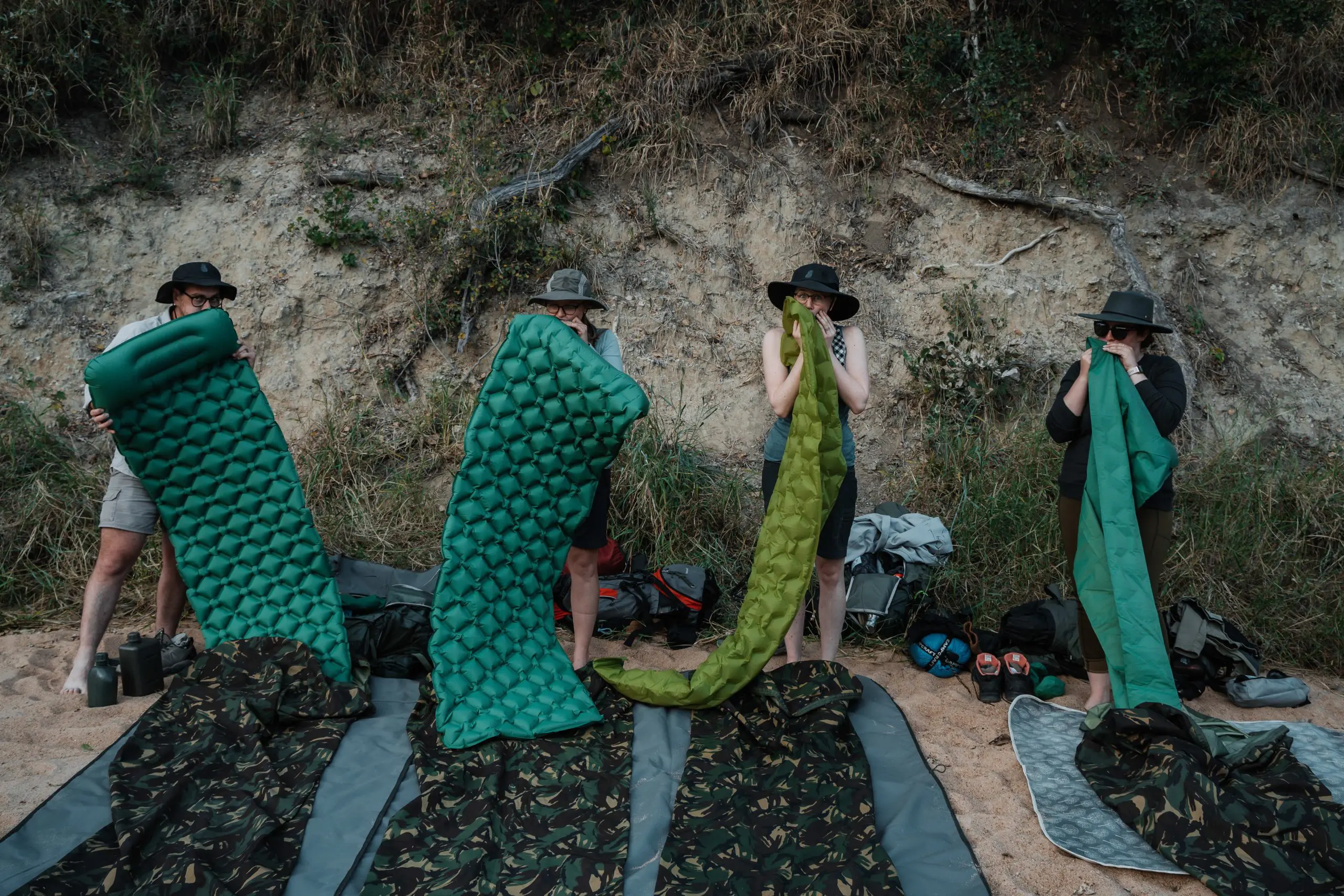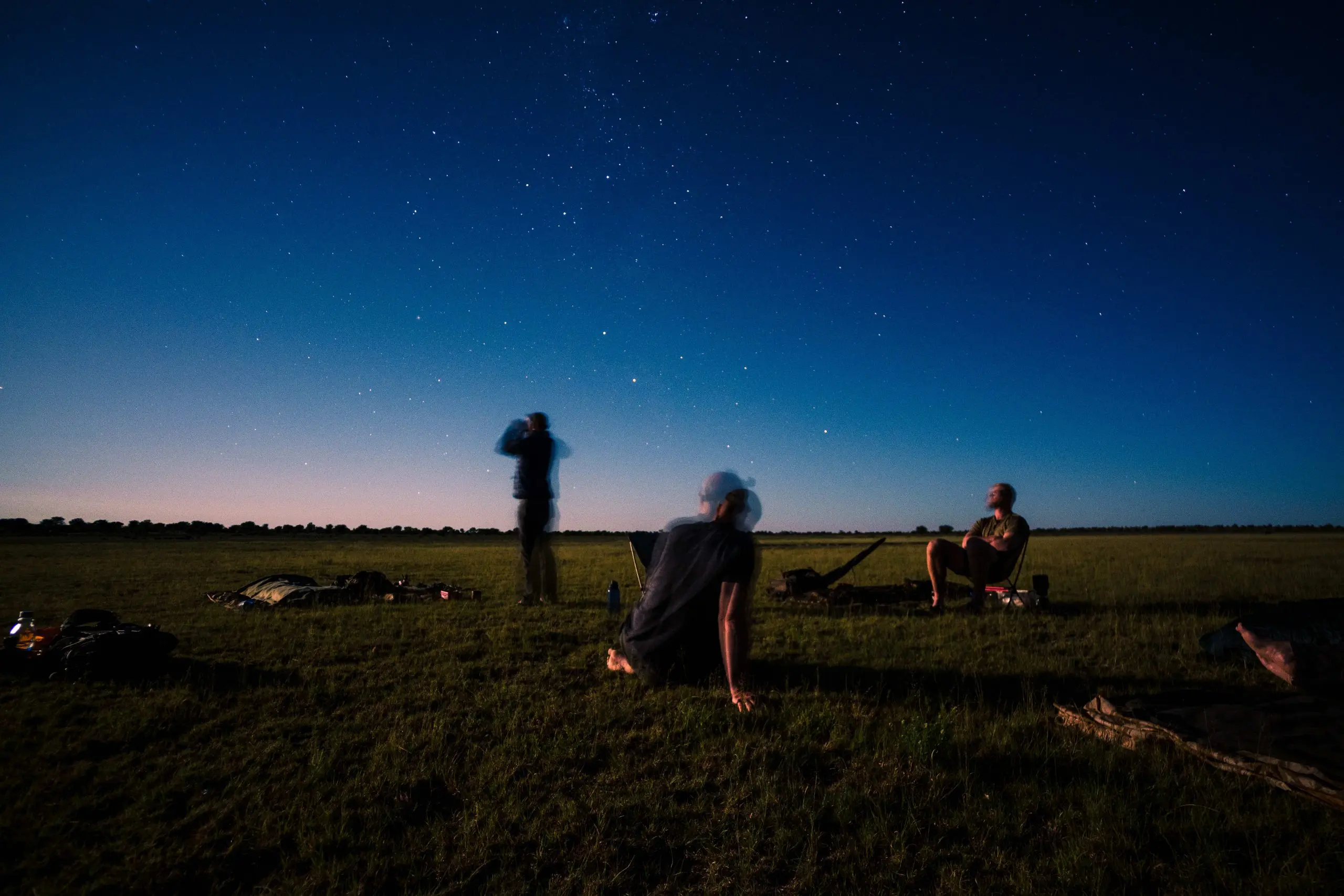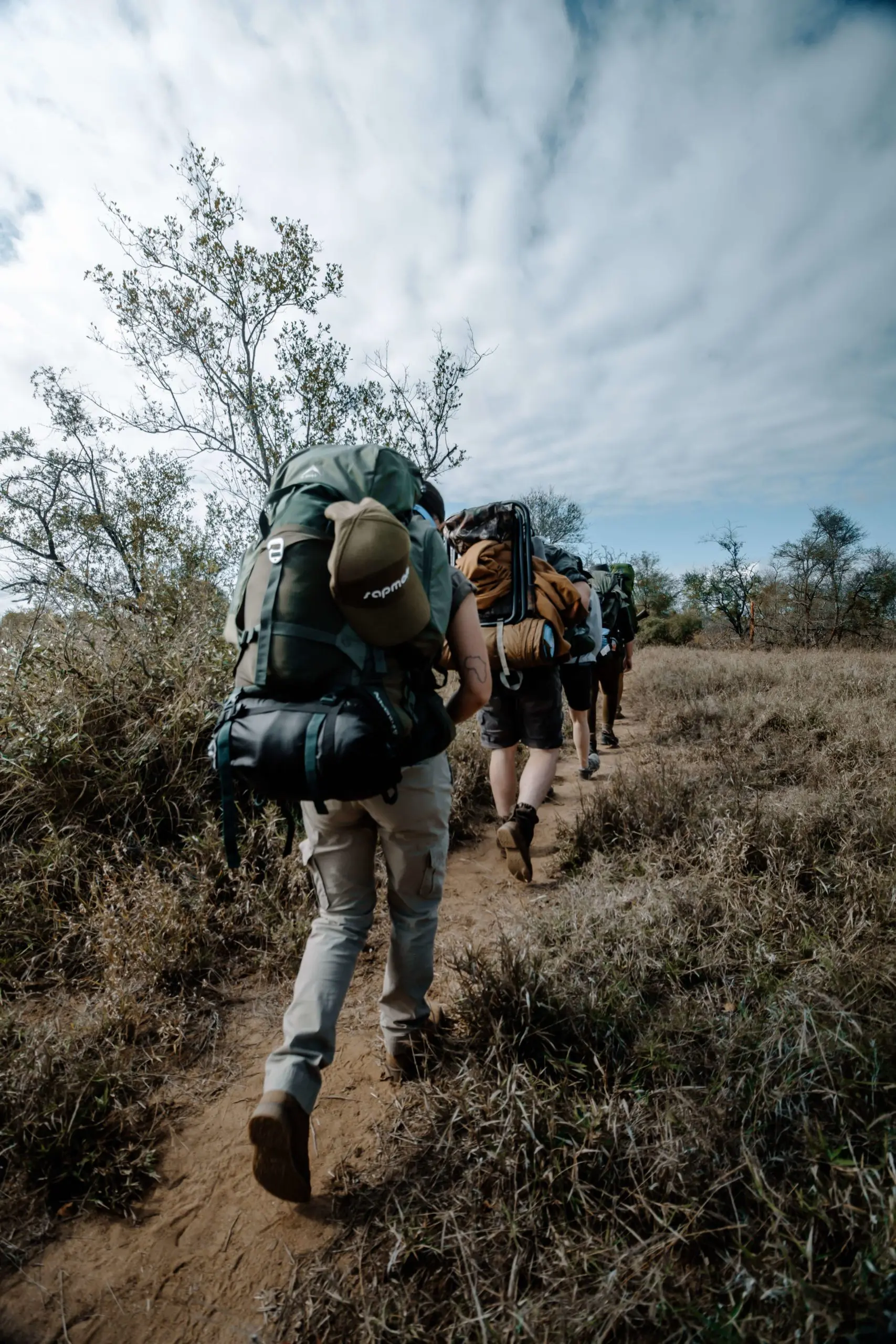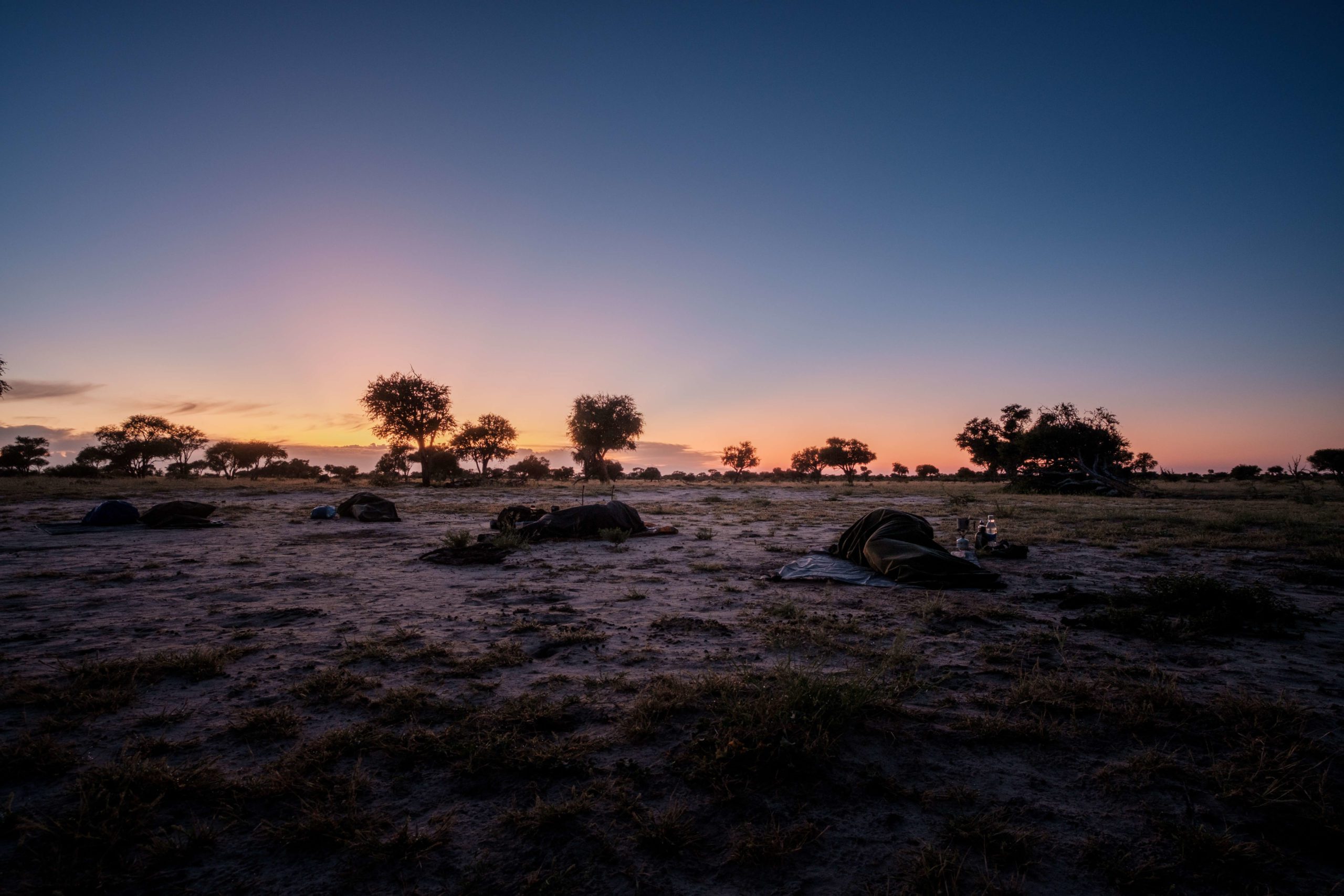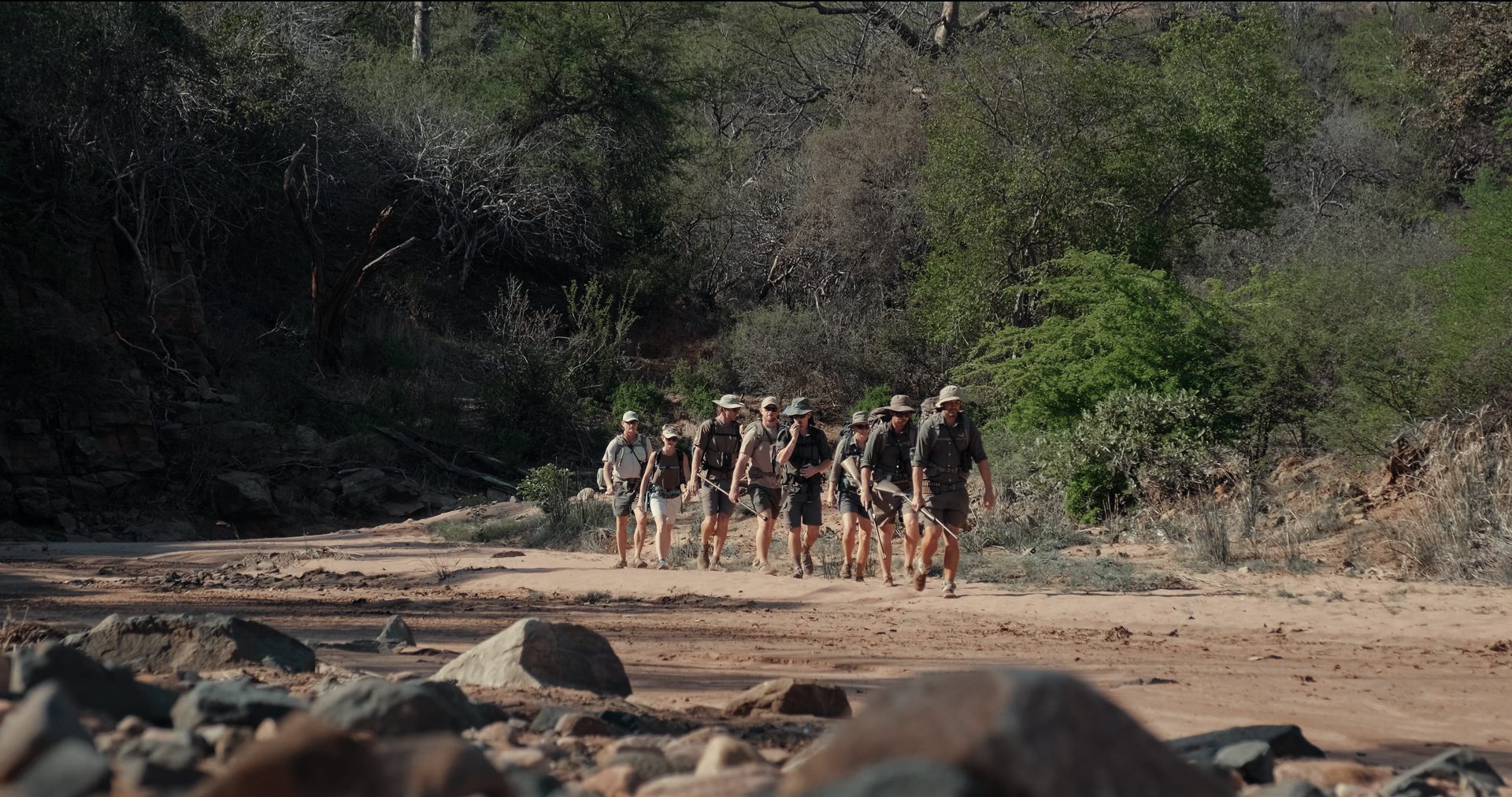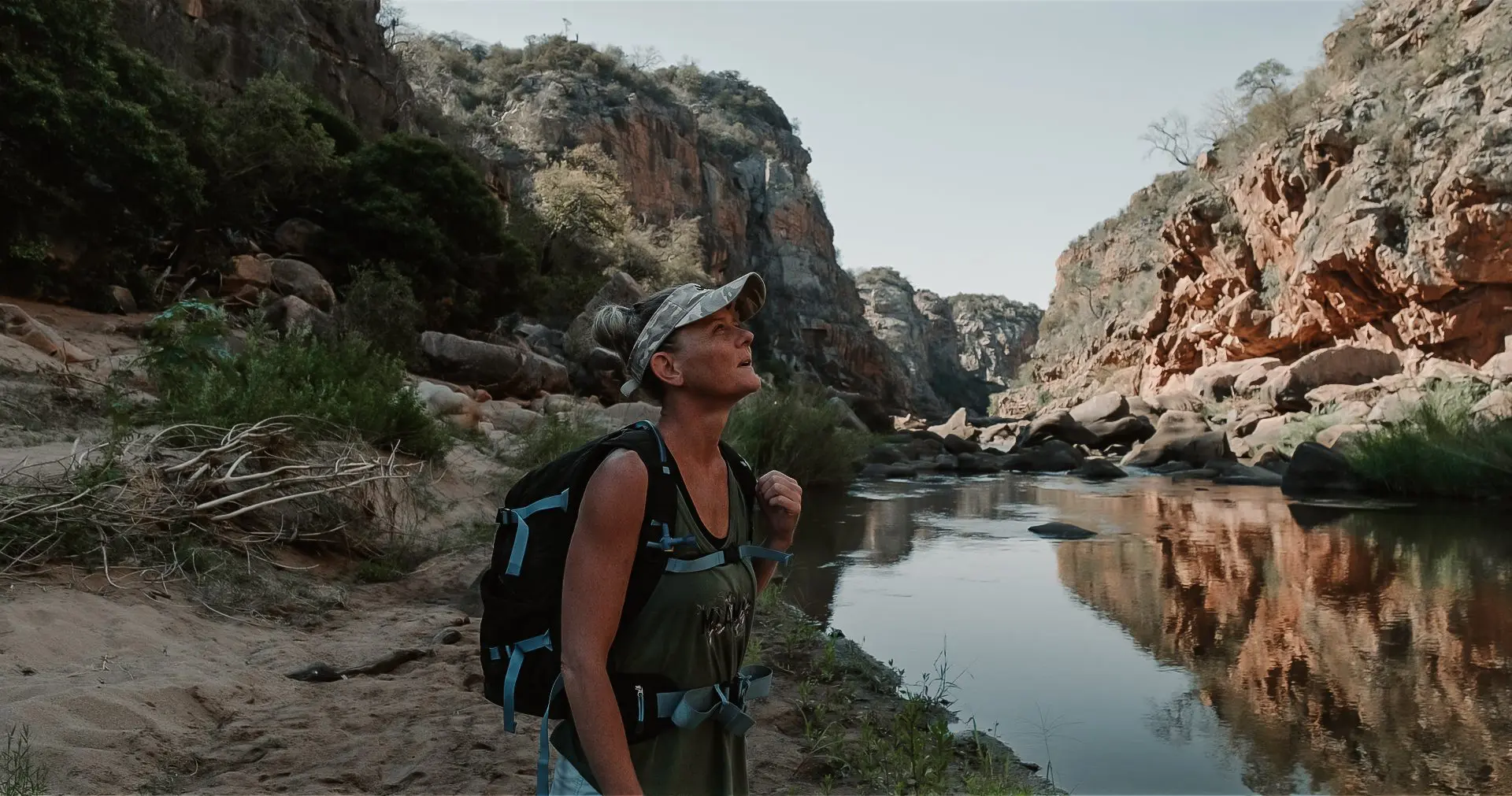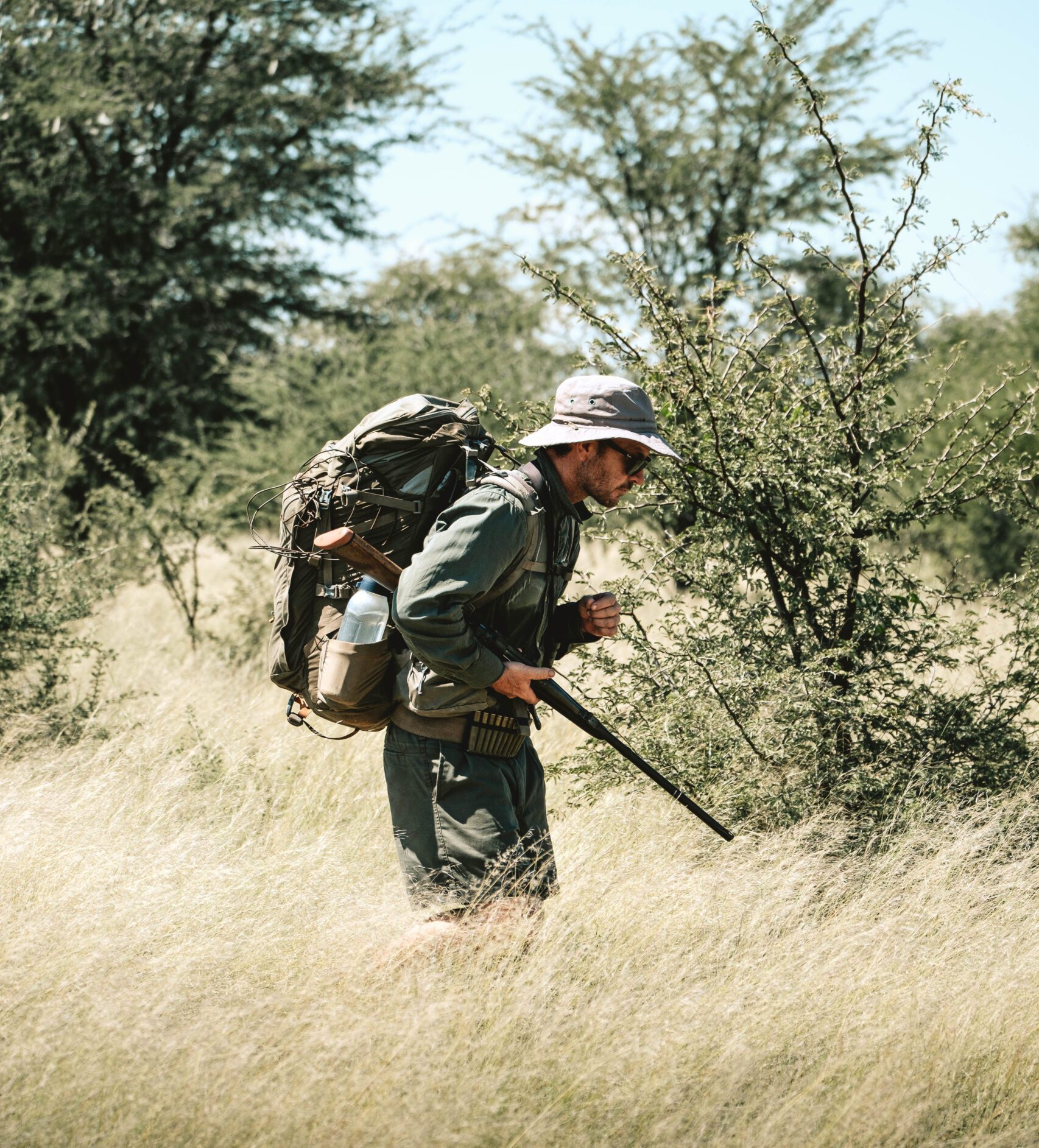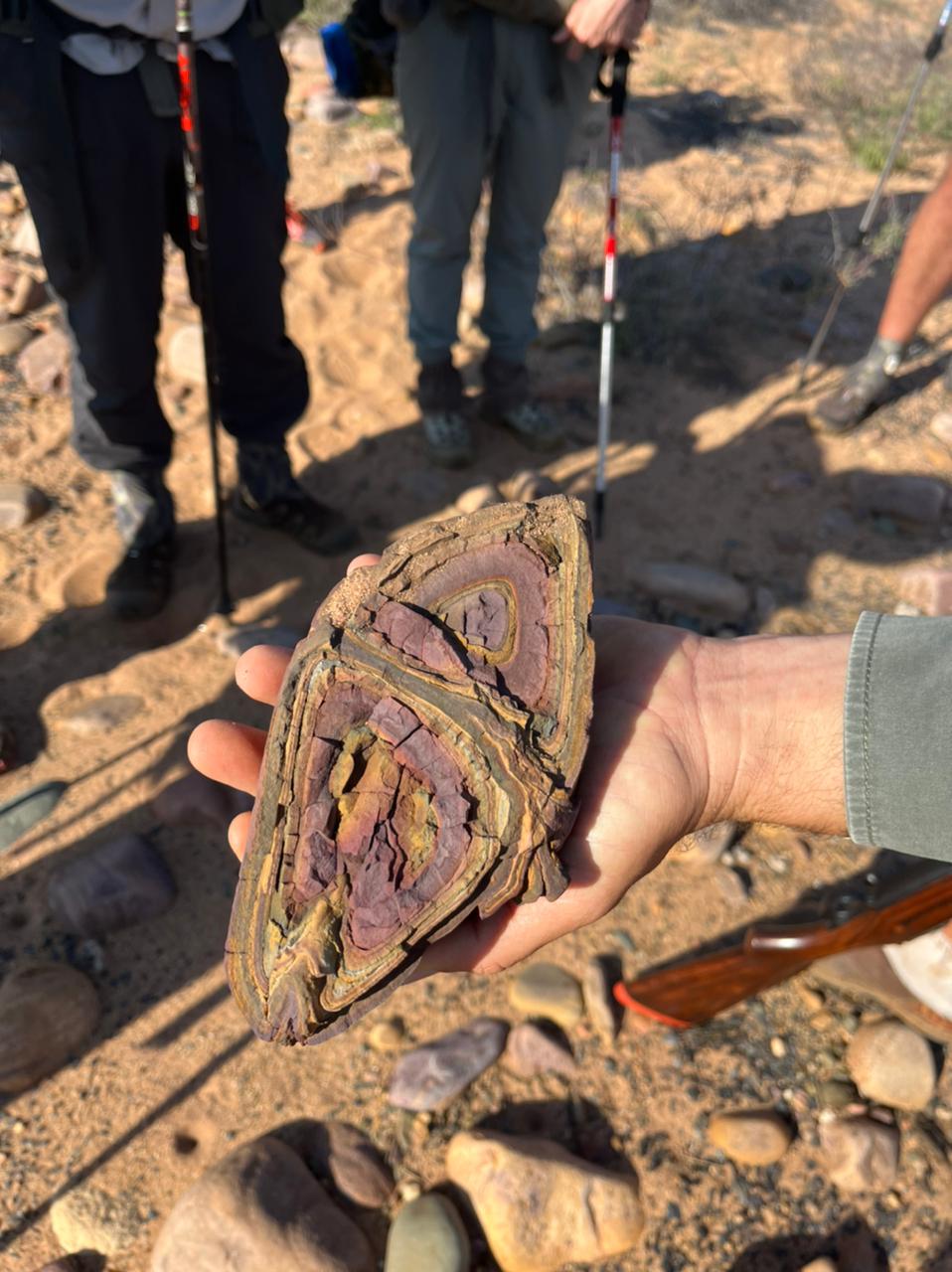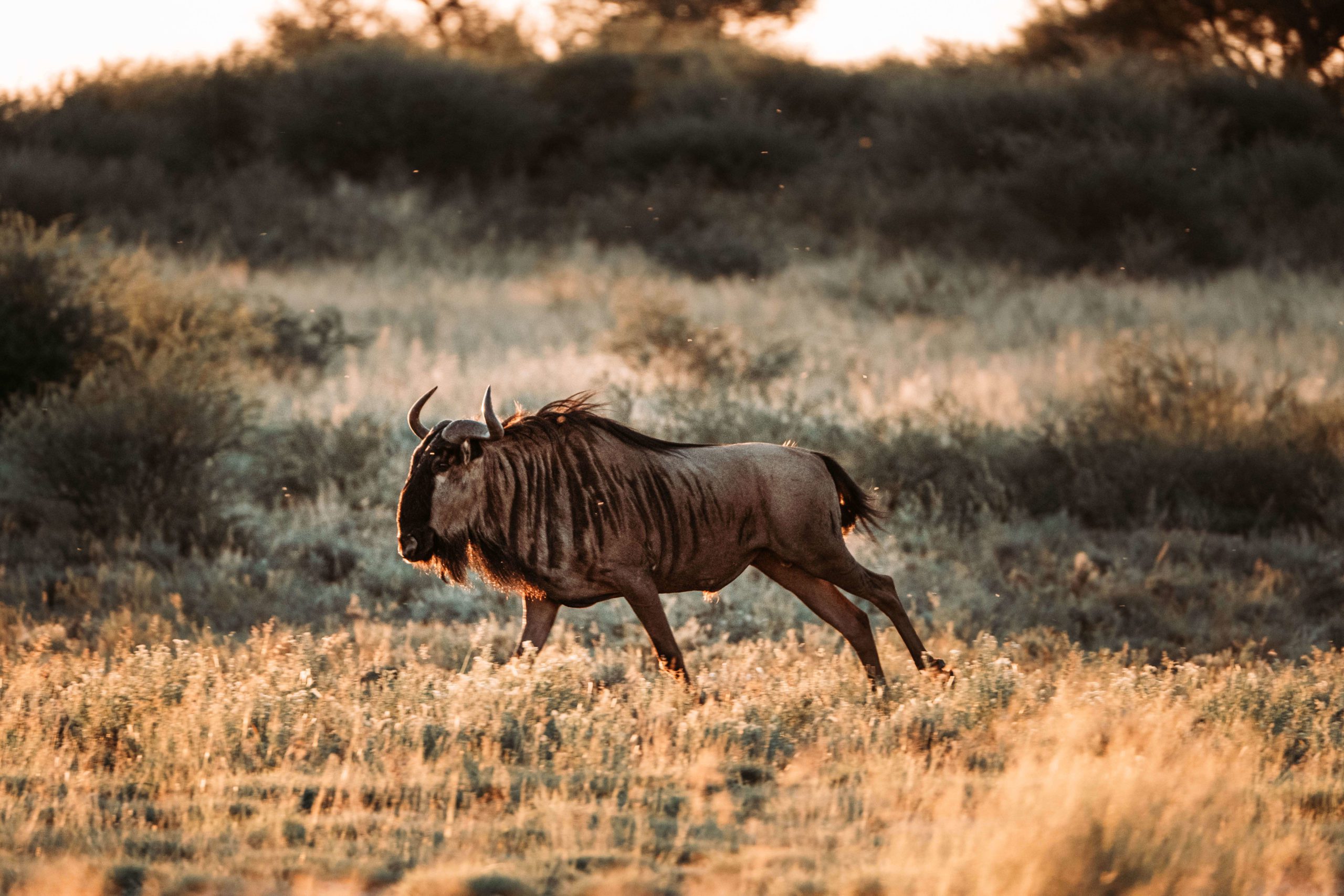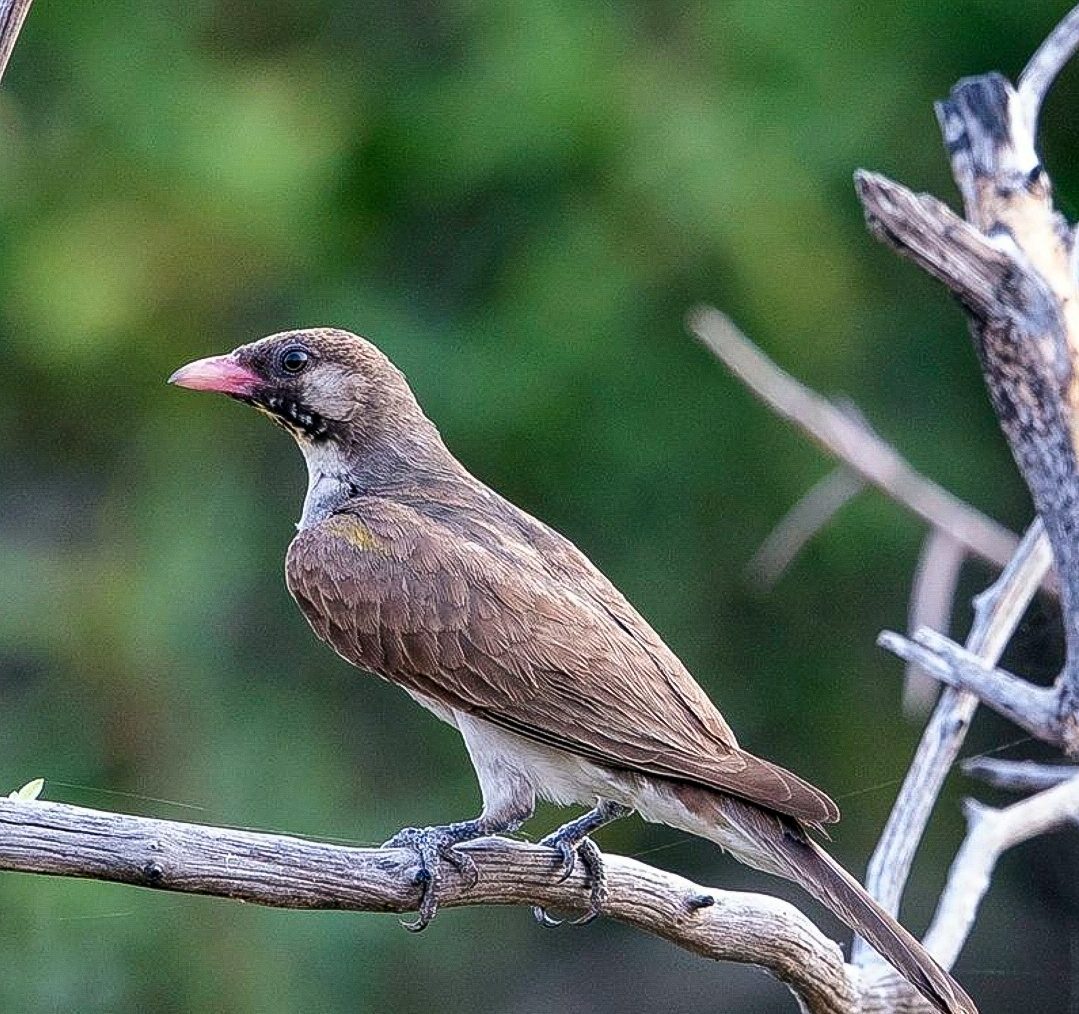My torch light connected with the heavy hoof falls of an Eland bull that determinedly cantered past as we sat on the ground around a small fire. The close proximity at which he skirted the Trails group raised suspicion. I stood up and took a few steps away from the fire to cast some light towards Kilala Plains. There were two more sets of eyes reflecting back from a thicket nearby. “We’ve got company” I told Jackson as the pale shapes of two male Lions appeared in my binoculars. Nobody knew these Lions better than Jackson; one of the Park’s more experienced Field Rangers that had been tasked with monitoring the population since their reintroduction in 2015. The two male Lions were now striding leisurely towards us as Jackson and I held our position in front of the group. We had become liable companions of Akagera National Park’s most recent reintroduction – Homo sapiens.
Akagera National Park’s history is Rwanda’s history. It is a story of rebirth and resilience. Just under 25 year ago, this protected area was on the verge of being lost forever. While peace was being restored after the 1994 Genocide against Tutsis, the National Park’s demise was just beginning. Refugees returning to Rwanda after the genocide were battling for their own survival. They turned to the forests for timber, wildlife for protein and the fertile savannas for their livestock. The Park’s wildlife was displaced by tens of thousands of long-horned cattle. There was no way of separating human activity and the wildlife that occupied this landscape. Consequently, more than 300 Lions were hunted to local extinction and the Rhino population was decimated too. Akagera National Park’s ecological integrity was profoundly jeopardized, so too was employment opportunity and the further benefits of tourism. The Park’s value was diminished to the point of barely existing at all. Considering its history, Akagera National Park’s current position is near miraculous.
Since the African Parks Network, in partnership with the Rwanda Development Board (RDB), assumed management of Akagera National Park in 2010, they have achieved tremendous conservation and tourism success. This includes re-erecting the Park’s western fence, essentially halting poaching activity, re-introducing Eastern Black Rhino and Lion populations (becoming a ‘Big Five’ destination) as well as growing tourism revenue to the point where the Park is currently 90% self-financing. Along with habitat (wildlife) conservation and community engagement, tourism has been a key driver in unlocking the much needed economic benefits for those that live around Akagera National Park. During 2019 more than 50 000 guests visited Akagera, which represents a tourism revenue increase of 1,150% since 2010.
I first travelled to Akagera National Park in 2016 to assist with counter insurgence tracker training (anti-poaching) prior to the reintroduction of 18 Eastern Black Rhino’s from South Africa. The grandeur of the landscape captivated me immediately. So too did the spirit of Jackson and the rest of his Field Ranger core. Their desire for knowledge and commitment to the cause of the National Park was outstanding. During those few weeks we got to know the landscape, and the people who benefit from it, extremely well. From the Papyrus choked lakeshore in the east to the high-lying grassy hills in the west, there was a sense of inspiration.
“The terrain lends itself to a Primitive Trail”, I suggested to Jes Gruner the Park Manager on the final night of a heartwarming visit to Rwanda. Understandably, the Black Rhino re-introduction was priority and almost two years passed before we made contact again. It was an email from Jes, “Bwana, do you still want to walk in Akagera?” it read. Obviously there was more to it, but that is the only sentence I remember. It was followed by my swiftest email responses ever. “Yes!” I replied. So began an incredible journey of establishing the Park’s Primitive Trail – ‘Trail de Akagera’.
A Primitive Trail is a completely immersive experience during which participants carry everything they require for the duration of the multi-day Trail in a backpack. With no tents, no technology and no extras each night is spent under the stars with participants sharing the responsibility of ‘watch duty’. Primitive Trails offer an alternative tourism model with which to explore Africa’s National Parks and wild spaces. It’s a shift from the spectatorship of the ‘colonial’ safari and encourages participation in nature. No infrastructure development is required and the activity is seasonal, providing the area of operation with enough time to recover from an already negligible impact. Primitive Trails could therefore provide economic justification for wild (undeveloped) spaces and may be incorporated into wilderness zoning and wilderness management plans in the future. Wilderness areas are under severe threat and of critical importance globally for maintaining biodiversity and large scale ecosystem services such as carbon sequestration. They also provide baselines for assessing current and future man-made environmental impact. Essentially, they are the ‘control’ sites for the large-scale human experiment we currently have in progress on our planet.
During September 2018 I returned to Akagera with mentor and friend Robert Bryden to start preparations for the Trail recce. Robert was influential in the establishment of the Mphongolo and Lonely Bull Backpack Trails in northern Kruger National Park during 2009 and 2011 respectively. Together we carefully studied the maps and decided to agree with the landscape and her contours. Most of Akagera’s geographic features are situated south to north and it would therefore make sense to align the Trail accordingly. Based on many years of patrols, Jackson knew most of the well walked animal paths across the Park and was an incredible asset in laying out a more precise route, especially where the contours did get steep. Some of the other route considerations included the dense vegetation and high concentration of animals such as Buffalo, Elephant and Hippo the Trail groups are likely to encounter along the lakeshore. It posed an unnecessary risk and is subsequently avoided. The lakeshore also has an extensive road network and interaction between the Trail groups and self-drive visitors will negatively impact on both parties’ experience. We wanted the Trail to avoid as much of the existing infrastructure and activity as possible. The concept was to showcase wild spaces and its intrinsic qualities such as remoteness, quietude, inspiration and opportunity to reflect. This would also provide the Primitive Trail Guides with a greater set of ‘tools’ with which to facilitate the experience. The Trail Guides conducting Trail de Akagera have a naturalist’s integrated knowledge and interpret ecology in a way that stimulates the rediscovery of relationships. Ultimately, the primary objective of the Trail was to provide access to the most endangered phenomenon of our time – the ‘experience of wilderness’.
Following the 60km (five-night) Trail recce we were satisfied and our preparation for the re-introduction of Sapiens into their natural habitat was almost complete. For nearly the entire history of our species (~200 000 years), humans have lived as foragers in savanna ecosystems. Due to a very recent series of developments (including an agricultural and industrial revolution) we began to fundamentally change our relationship with nature. We have placed ourselves outside of nature and above all else. The progressive loss of human-nature interactions has become known as the ‘extinction of experience’. It may yet prove to be one of the key environmental concepts of our times. Not only does this loss reduce the important benefits that people gain from these interactions, but it also undermine their support for pro-biodiversity policies and management actions, and thus play an important role in shaping the future of biodiversity.
Akagera National Park and Africa Trails Co. has therefore taken on the ambitious task of re-introducing Homo sapiens into their natural habitat for the benefits associated with humans in nature. The re-introduction will be ongoing during August, September and October, which is aligned with the best season to appreciate this inspirational landscape. Trail participants have been dubbed the ‘Hunter-Gatherers of the 21st Century’. The experience of walking through a wild landscape in a small band, carrying only essential belongings on your back, is to become a hunter-gatherer of the 21st century. Drawing on the ‘wild advice’ that emerges on Trail, you become a hunter for meaning and gatherer of values. Trail de Akagera endeavors to rewild the human imagination.
The Lions veered off to our left and it soon became clear that they had no interest in us beyond their natural curiosity. They were on route and happened to encounter us along their way. There was no conflict; we were sharing space on the savanna once more. As the Lions passed, it was time for the first shift of ‘watch duty’. All the Trail participants crawled in under their mosquito nets and settled in for the night leaving the watchman on duty alone at the fire. “Don’t worry, I have it all under control” he proclaimed tongue in cheek. So too did Jackson and myself. Our pioneering re-introduction was a success. The first commercial Trails were conducted in October of 2018. It is time to make Nature a verb.



